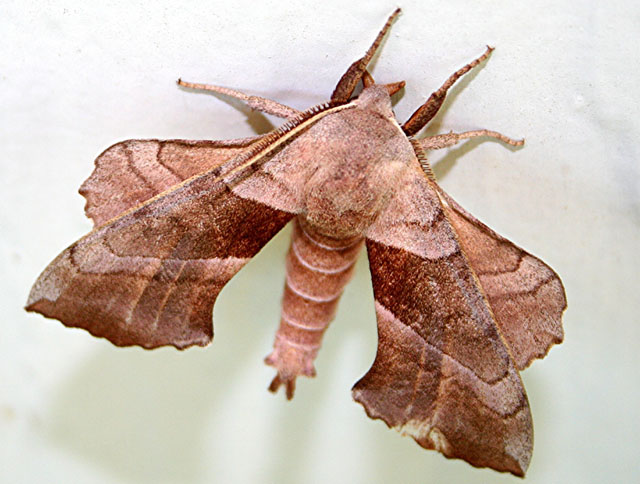
Amorpha juglandis, Arlington (Tarrant County), Texas,
April 19, 2006, courtesy of Dale Smith.
|
|
Created/dedicated as per personal communication with Dale Smith, April 19, 2006 Updated as per personal communication with Seana Saxon, August, 2006 Updated as per personal communication with Kelly Delany Updated as per personal communication with Val Mansfield, March 2007 Updated as per personal communication with Justin & Valerie Valleau, August 2007 Updated as per personal communication with Michelle Swan, April 1, 2008 Updated as per personal communication with Tristyn Schreiber Underwood, May 26, 2008 Updated as per personal communication with Virginia Dyson, June 24, 2009 Updated as per personal communication with Gary Vernon, September 19, 2009 Updated as per personal communication with Robert McClure, October 8, 2010 Updated as per James P. Tuttle's The Hawk Moths of North America, November 2010 Updated as per personal communication with Lacey L. Ogburn, November, 2010 Updated as per personal communication with Glen (Agrius cingulata, Carrollton, April 30, 2011); May 5, 2011 Updated as per personal communication with Peter F. Assmann, May 31, 2011 Updated as per personal communication with Barbara Kelly, (Eumorpha fasciatus, Terrell, Kaufman County, August 18, 2015); August 20, 2015 Updated as per personal communication with Mary Morrow, (Amorpha juglandis, Double Oak, Denton County, June 7, 2015); November 15, 2015 Updated as per personal communication with Jennifer Kolmes, (Amorpha juglandis, Richardson, Dallas County, August 13, 2017); August 16, 2017 |

Amorpha juglandis, Arlington (Tarrant County), Texas,
April 19, 2006, courtesy of Dale Smith.
This page is inspired by and dedicated to Dale Smith who sent me the picture of the
Amorpha juglandis male from Arlington (Tarrant County) at the top of this page.
Dale writes, April 19, 2006, "I could not identify the above moth until I saw your website.
"I found the moth on the outside wall of my shop in Arlington, Texas.
"It looks more like the female to me, but Iím not an expert.
"Would you mind telling me what you think?"
Seana Saxon sends these nice images from Dallas, Texas, August 3, 2006. The pointed head (outlined in yellow), grainy skin and dominant last abdominal stripe are diagnostic of Amorpha juglandis.
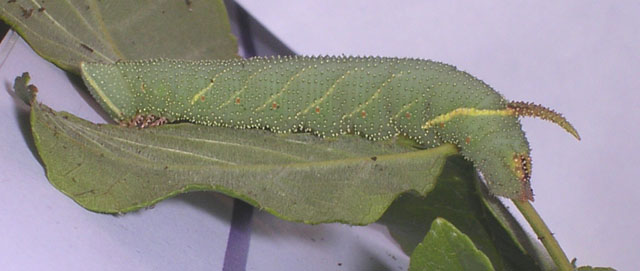
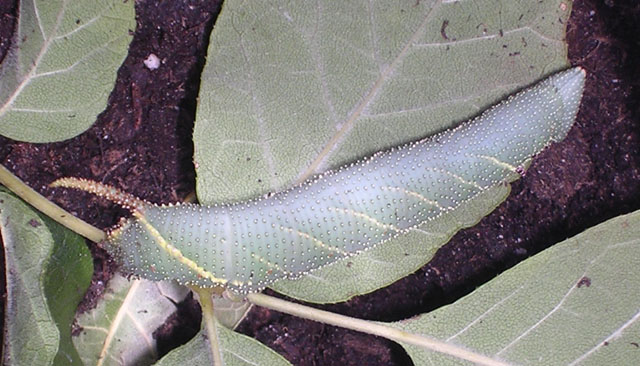
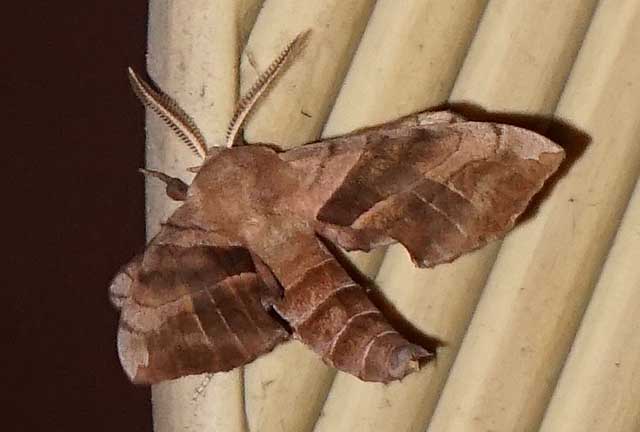
Amorpha juglandis male, Double Oak, Denton County, Texas,
June 7, 2015, courtesy of Mary Morrow.
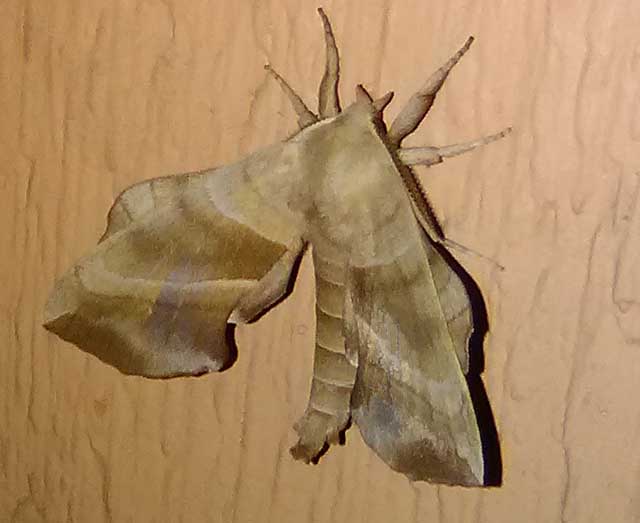
Amorpha juglandis male, Richardson, Dallas County, Texas,
August 13, 2017, courtesy of Jennifer Kolmes.
A "USGS" indicates the moth is reported on the USGS website and/or in Lepidoptera of North America, #1. Distribution of Silkmoths (Saturniidae) and Hawkmoths (Sphingidae) of Eastern North America, an excellent little booklet available through Paul Opler.
Please help me develop this list with improved, documented accuracy by sending sightings (species, date, location), preferably with an electronic image, via email to Bill Oehlke.
The night-blooming moon flower will attract many Sphingidae at dusk and into the night.
Sphinginae subfamily
Agrius cingulata, Carrollton, Dallas, Denton, Collin counties, April 29, 2011, Glen.
Smerinthini Tribe:
Amorpha juglandis male, Double Oak, Denton County, June 7, 2015, Mary Morrow. Amorpha juglandis male, Richardson, Dallas County, August 13, 2017, Jennifer Kolmes.
Macroglossinae subfamilyDilophonotini tribe:
See Hemaris comparison to help distinguish the next two species.
Philampelini tribe:
Macroglossini tribe:
|
This page is brought to you by Bill Oehlke and the WLSS. Pages are on space rented from Bizland. If you would like to become a "Patron of the Sphingidae Site", contact Bill.
Please send sightings/images to Bill. I will do my best to respond to requests for identification help.
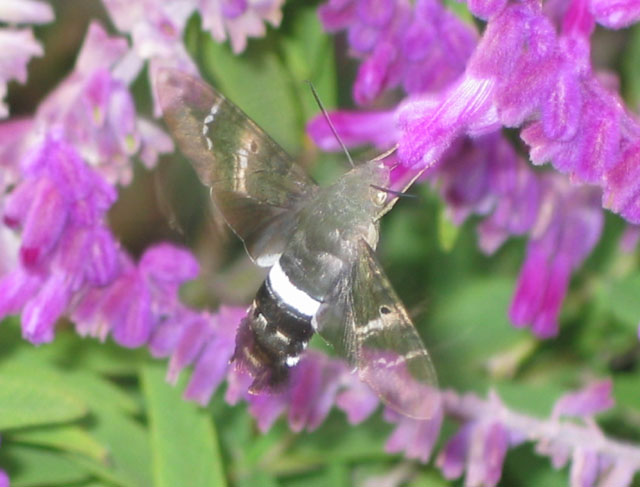
Aellopos titan, nectaring at Mexican Bush Sage, Collin County,
Texas,
5:00pm, October 31, courtesy of Kelly Delany.
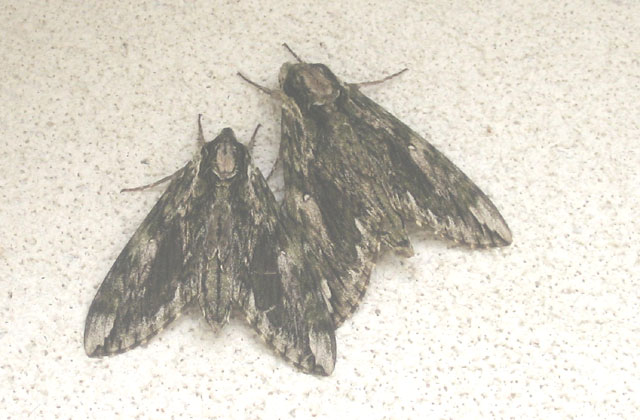
Ceratomia hageni, March 21, 2007, Ennis (Ellis Co.), Texas, courtesy of Val Mansfield.
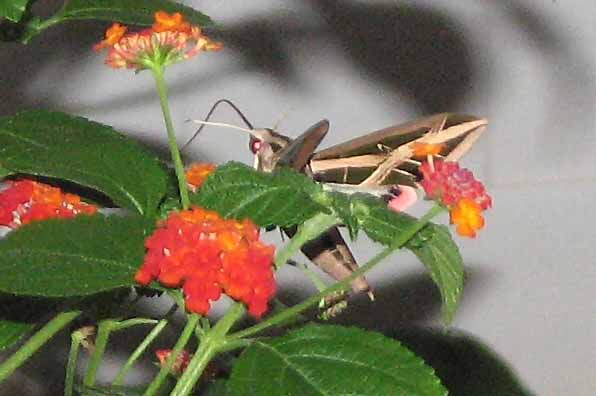
Eumorpha fasciatus, nectaring at lantana, Tyler (Smith County), Texas,
August 10, 2007, courtesy of
Justin & Valerie Valleau
Enjoy some of nature's wonderments, giant silk moth cocoons. These cocoons are for sale winter and fall. Beautiful Saturniidae moths will emerge the following spring and summer. Read Actias luna rearing article. Additional online help available.
Eggs of many North American species are offered during the spring and summer. Occasionally summer Actias luna and summer Antheraea polyphemus cocoons are available. Shipping to US destinations is done from with in the US.
Use your browser "Back" button to return to the previous page.
This page is brought to you by Bill Oehlke and the WLSS. Pages are on space rented from Bizland. If you would like to become a "Patron of the Sphingidae Site", contact Bill.
Please send sightings/images to Bill. I will do my best to respond to requests for identification help.
 Show appreciation for this site by clicking on flashing butterfly to the left. The link will take you to a page with links to many insect sites. |
I very much appreciate all the many images that have been sent to me, or of which I have been granted permission to copy and post from other websites. All images on this site remain the property of respective photographers.
If you would like to contribute to the maintenance of this website by sending a contribution to
Bill Oehlke
Box 476
155 Peardon Road
Montague, Prince Edward Island, C0A1R0
Canada
your donation would be much appreciated and would be used for
1) paying for webspace rental;
2) paying for computer maintenance and software upgrades;
3) purchases of additional text reference material (journals and books) in anticipation of expanding the site to a worldwide Sphingidae site;
4) helping to pay my daughter's tuition; with anything left over going to humanitarian aid.
If you are mailing a check from USA, please use $1.20 postage (2015 rate). Donations can also be made through Paypal via the button below.